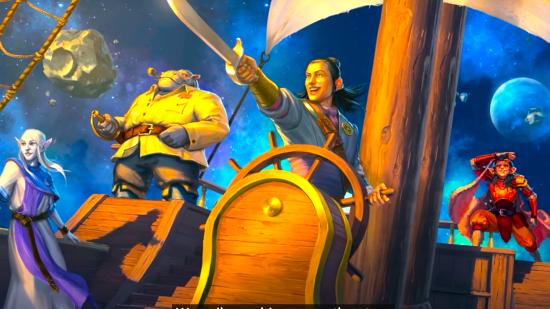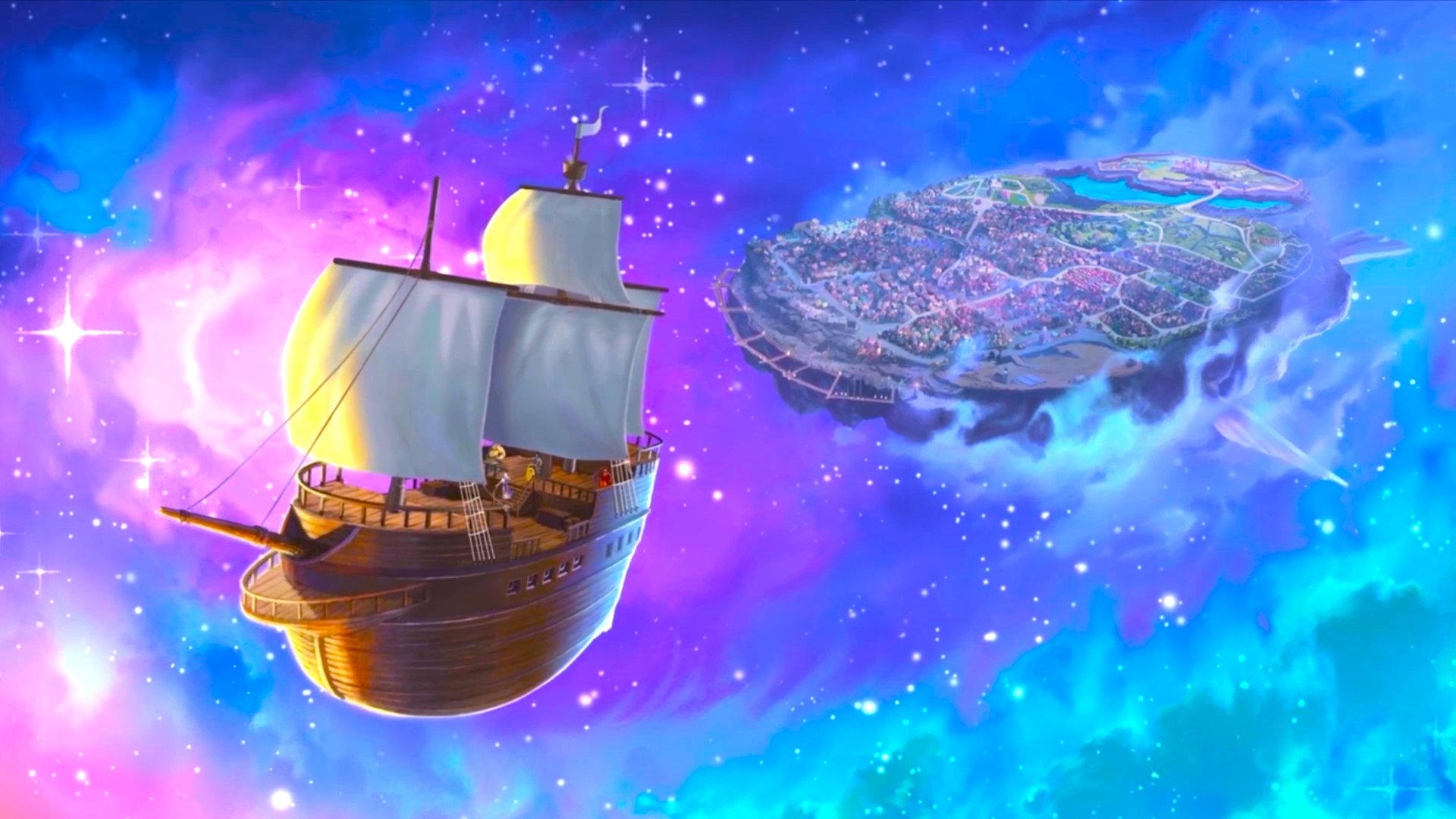If you’re a fan of Dungeons and Dragons, you’ve probably heard the name Spelljammer in all sorts of places recently. Ever since Spelljammer 5E was released in August 2022, fans of tabletop RPGs everywhere have had space on the brain. But what exactly is a Spelljammer, anyway?
Well, technically it’s three things. Firstly, Spelljammer is the name of a DnD setting developed by Jeff Grubb for AD&D 2E back in the 1980s. The Spelljammer books brought something completely different to D&D at the time, charting a way to travel space and link the various worlds of the TTRPG. Secondly, spelljamming is a verb – it’s when a spellcaster uses their magical ability to control a floating ship and move through space. And lastly, The Spelljammer is a specific spelljamming ship that’s been floating in and out of legend since space travel began.
Whether you’re an old hat at space travel or you’re coming to Spelljammer for the first time through fifth edition, this guide can summarise all the key info to know before getting started. Get ready for more Spelljammer knowledge than you can shake a space hamster at.
Here’s your D&D Spelljammer 5E guide:
Spelljammer places
Back in 1989, D&D didn’t have the cosmology we understand today – DnD planes were yet to be fully developed as a concept. This means, in Spelljammer 2E, space and places worked a little differently.
Each campaign setting (like Krynn from Dragonlance, Greyhawk, and the Forgotten Realms) existed in a Crystal Sphere. Think of this as a big wall around the universe that keeps all other universes out. Between each crystal sphere flowed the Phlogiston, a rainbow, fluorescent gas.
In Spelljammer 5e, we now have the current cosmology to work with, so the setting now takes place in the Astral Plane. This is “an infinitely vast celestial void that surrounds all the worlds of the Material Plane”.
[PIC]
In either edition of Spelljammer, a lot of your spelljamming will likely be done in ‘Wildspace’. This is the space between the planets, stars, and celestial bodies in a particular Crystal Sphere or Wildspace System. The original Spelljammer: Adventures in Space was filled with advice on how to create a planetary system for your adventure, as well as the details of several existing systems. However, this is sadly absent from Spelljammer 5e (and definitely influenced our Spelljammer 5e review).
Of course, Spelljammer isn’t without its DnD cities. The Rock of Bral, a merchant city built on both sides of an asteroid, is used as a hub in both editions of Spelljammer.
Spelljammer races
Several DnD races from the Spelljammer setting returned for Spelljammer 5E. This includes the Giffs, which are humanoid hippos; Autognomes, who are mechanical beings built by Rock Gnomes; the ape-like Hadozees; the Thri-Kreen, who are four-armed insectoids; and Astral Elves, who pretty much do what they say on the tin. Thanks to the amorphous amoebas known as Plasmoids, you can now also play as an ooze.
It’s important to note that the race descriptions in Spelljammer 5e have changed since the physical books were released. The Hadozee lore was altered in digital versions of Spelljammer after fans pointed out parallels with racist stereotypes, and future printed versions of the book will also no longer contain these passages.
While Spelljammer 5e doesn’t talk much about the game’s non-Spelljammer races, Spelljammer 2E offers some additional alternative lore for these character options. In Spelljammer 2E, humans were the most common race found in space, with Elves and Dwarves also widespread. Races like Gnomes and Halflings were considered far too fond of the ground to frequent the skies.
Spelljammer monsters
Player-characters aren’t the only ones spelljamming around in Wildspace; you can expect plenty of monsters to keep your campaign less than ship-shape. Spelljammer 2E introduced a whole bunch of new D&D monsters. This includes the Neogi, a ruthless, spider-like creature; fishlike space creatures known as Scavvers; and Giant Space Hamsters, which are – well, giant space hamsters.
Each of these is included Spelljammer 5E, along with plenty of new additions. Space Clowns and Vampirates certainly make Wildspace more colourful, for example.
Like certain races, Spelljammer 2E says certain ‘regular’ monsters are particularly present or absent in space. Lizard Men, Mind Flayers, and the undead all do very well in space – your standard surface-dwelling DnD dragons, not so much. Spelljammer 5E does have plenty of Lunar and Solar dragons to balance things out, though.
Another Spelljammer 2E exclusive is the edition’s guide to translating home-world creatures for a space setting. It suggested adjusting stats, for example by doubling the hit die or number of attacks for the giant version of a ground creature. There were limitations in place to ensure the creature’s stats were balanced, but when it came to the creature’s appearance, Spelljammer 2E recommended going hog wild with your creativity to keep players on their toes. Nobody expects a Giant with the head of a Mind Flayer.
Spelljammer ships
Obviously, all of these space-faring creatures will need a good way to travel around. The Spelljammer is a ship after all, and there were a wide variety of other ships to choose from in Spelljammer 2E. Different races often built and steered their own specific type of spelljamming vessel. The Elves captained Elven Flitters, while humans might get around in a Dragonfly, Damselfly, or a Mosquito – as you can guess from the names, each of these ships was designed to look like an insect.
Other ships in Spelljammer 2E had fish-like qualities. There was the Tradesman, which had fins; the Hammership, which looked like a hammerhead shark; and the Mind Flayer Nautiloid, which had a stern that curled just like a nautilus shell. The Spelljammer was a strange cross between both these motifs, having the features of both a manta ray and a scorpion.
Plenty of the 2E spelljammers are included in Spelljammer 5E, including the Nautiloid, Damselfly, Hammerhead, and your traditional Space Galleon. The new edition offers a trimmed-down version of the ship’s rules, and there are still a few OG vessels missing – so there’s plenty of opportunities for a good homebrew.




